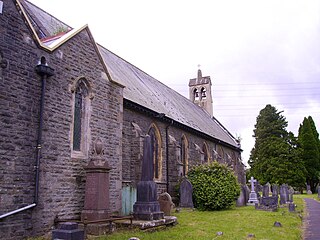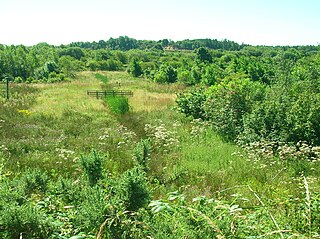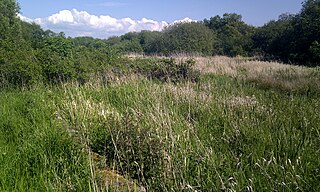List of the deceased
- John Clauchan (35)
- William Clauchan (56) This age date for William is in error: Please see record attached for ages of Glachan brothers at death 2-6 August 1895
1895 Death Certificate Name of Parish/District Stevenston Parish/District Number 615 Entry No 85 Surname Glauchan Mother's Name Helen Name(s) William and Surname Glauchan Age 28 Mother's Occupation Occupation Coalminer Alive / deceased? Sex M Maiden Surname Walker Date of Death between 2 - 6 August 1895 Cause of Death Pit disaster Time of Death Place of Death Auchinharvie Colliery, Stevenston Medical Attendant Usual Residence Name of Informant C Glauchan (if different from Relationship Widow above) to Deceased Marital Status Married Residence of Above Townhead St Name of Spouse(s) Catherine Kerr (if different) Stevenston Fathers Name James Date and Place 22/8/1895 and Surname Glauchan of Registration Stevenston Father's Occupation Coalminer Registrar John Dickie Alive / deceased? Deceased Other information
Record of Corrected entries. Sept 30 1895 The Auchenharvie Mine Disaster 1895 On Friday 2 August 1895 a disaster occurred at No 4 pit in which nine people died and five men were rescued after being entombed from the Friday morning until Sunday afternoon. This disaster was caused by the breaking through of water from the old workings to the east of the Capon Craig Gaw. This ' Gaw ' was supposed never to have been cut. It would appear, however, that at some former period it must have been pierced for about 3 p.m. on that day an outburst of water suddenly took place in the extreme rise of No 4. One of the sad features of the disaster was the loss it entailed on two families, one of which named GLAUCHAN lost four members while the other, named Mullen, lost two. The Deceased were:- Robert Conn aged 16 of Grange Street, Stevenston. Duncan Gallagher aged 32 of Schoolwell Street - brother -in - law to the Glauchans - left 5 children. 4 members of the Glauchan family of Townhead Street, Stevenston, John aged 30, WILLIAM AGE 26YRS, James aged 19, and Henry aged 17. John McGee - aged 14 Brothers James 19 and Peter 14 Mullen both of Schoolwell Street, Stevenston The miners that survived entombment were:- Charles Clark, Station Square, Stevenston, age 21 William Hamilton aged 22 Alexander Macadam, Old Square, Stevenston age 38 brother in law of Michael McCarroll, Ardeer Square, aged 40 Robert Park, New Street
- James Clauchan (21)
- Henry Clauchan (18)
- Duncan Gallacher (31)
- James Mullen (19)
- Peter Mullen (14)
- Robert McConn (18)
- John McGhee (14)

Stevenston is a town and parish in North Ayrshire, Scotland. Along with Ardrossan and Saltcoats it is one of the "Three Towns", all of similar size, on the Firth of Clyde coast; the easternmost parts of Stevenston are about 1⁄2 mile from western parts of Kilwinning, with the A78 trunk road running between the settlements.

Abercanaid is a small village in the county borough of Merthyr Tydfil, Glamorgan, Wales, United Kingdom with a population of about 5,060. It is situated 2.5 miles (4.0 km) south of Merthyr town centre and is west of Pentrebach, across the River Taff and north of Troedyrhiw. The Taff Trail runs through the village, adjacent to the path of the disused Glamorganshire Canal, which was an important in transporting iron and coal during the industrial boom in which the South Wales Valleys prospered.

The Pretoria Pit disaster was a mining accident on 21 December 1910, when an underground explosion occurred at the Hulton Colliery Bank Pit No. 3, known as the Pretoria Pit, in Over Hulton, Westhoughton, then in the historic county of Lancashire, in North West England. A total of 344 men and boys lost their lives.

Kerelaw Castle is a castle ruin situated on the coast of North Ayrshire, Scotland in the town of Stevenston.

Auchenharvie Castle is a ruined castle near Torranyard on the A 736 Glasgow to Irvine road. Burnhouse lies to the north and Irvine to the south. It lies in North Ayrshire, Scotland.

The Birley Collieries were a group of coal mines set in the Shire Brook Valley in south-east Sheffield, South Yorkshire, England. They were connected to the railway system by a branch line from the Manchester, Sheffield and Lincolnshire Railway at Woodhouse East Junction, about 800 yards east of Woodhouse station.

Hopkinstown is a small village to the west of Pontypridd in the county borough of Rhondda Cynon Taf, Wales, alongside the River Rhondda. Hopkinstown is a former coalmining and industrial community, now a district in the town of Pontypridd within the Rhondda electoral ward. Neighbouring settlements are Pwllgwaun, Trehafod and Pantygraigwen, and the sub-districts of Troed-Rhiw-Trwyn and Gyfeillion.

The Eglinton Castle estate was situated at Irvine, on the outskirts of Kilwinning, North Ayrshire, Scotland in the former district of Cunninghame. Eglinton Castle, was once home to the Montgomeries, Earls of Eglinton and chiefs of the Clan Montgomery. Eglinton Country Park now occupies part of the site.

Ardeer was a small town now officially incorporated into Stevenston on the Ardeer peninsula, in the parish of Stevenston, North Ayrshire, originally an island and later its extensive sand dune system became the site of Nobel Explosives, a dominant global supplier of explosives to the mining and quarrying industries and a major player in the design and development of products for the chemical and defence industries during the 20th century. The peninsula is now part of North Ayrshire's most important area for Biodiversity.

The Cambrian Colliery was a large coal mine that operated between 1872 and 1967 near Clydach Vale in the Rhondda Valley, south Wales. It is notable for its huge production and for two infamous explosion disasters, in 1905 and 1965, in which a total of 64 miners were killed. Its owners sank the first pits into a rich coal seam in the 1870s from which, within 20 years, over 700 tons were being extracted daily. The complex was connected to the Taff Vale Railway and had room in its sidings for over 840 wagons. The colliery's workforce, which numbered over 4,000 in 1913, was prominently involved in the Tonypandy Riot of 1910.

Coal mining in the United Kingdom dates back to Roman times and occurred in many different parts of the country. Britain's coalfields are associated with Northumberland and Durham, North and South Wales, Yorkshire, the Scottish Central Belt, Lancashire, Cumbria, the East and West Midlands and Kent. After 1972, coal mining quickly collapsed and had practically disappeared by the 21st century. The consumption of coal – mostly for electricity – fell from 157 million tonnes in 1970 to 18 million tonnes in 2016, of which 77% was imported from Colombia, Russia, and the United States. Employment in coal mines fell from a peak of 1,191,000 in 1920 to 695,000 in 1956, 247,000 in 1976, 44,000 in 1993, and to 2,000 in 2015.

The Lancashire Coalfield in North West England was an important British coalfield. Its coal seams were formed from the vegetation of tropical swampy forests in the Carboniferous period over 300 million years ago.
Tyldesley Coal Company was a coal mining company formed in 1870 in Tyldesley, on the Manchester Coalfield in the historic county of Lancashire, England that had its origins in Yew Tree Colliery, the location for a mining disaster that killed 25 men and boys in 1858.

The Bedford Colliery disaster occurred on Friday 13 August 1886 when an explosion of firedamp caused the death of 38 miners at Bedford No.2 Pit, at Bedford, Leigh in what then was Lancashire. The colliery, sunk in 1884 and known to be a "fiery pit", was owned by John Speakman.
Sir William Galloway was a Scottish mining engineer, professor and industrialist.

Piperheugh, Piper's-Heugh, or even Piperhaugh was a hamlet in North Ayrshire, Parish of Stevenston, Scotland. The inhabitants were recorded as famous manufacturers of trumps, or Jew's harps. The village only survived as ruins by 1837 and no remnants are now visible, not even the plantation that bore its name. 'Pyperheugh' and 'Pypersheugh' are both recorded in the 18th century.

Stevenston Beach is a Local Nature Reserve (LNR), located between Stevenston and Saltcoats in Scotland. It is situated on the coast, west of the Stevenston Burn. The park covers an area of 12 ha, and consists mostly of sand dunes, with an area of coal mining spoil derived from Auchenharvie Colliery No. 5 pit which produced Ladyha' coal. It is ranked as the fifth most important sand dune system in Ayrshire. The dunes are also designated as a wildlife site by the Scottish Wildlife Trust.

The Stevenston Canal was a waterway in North Ayrshire, Scotland, built for Robert Reid Cunningham of Seabank and Patrick Warner of the Ardeer Estate, which ran to the port of Saltcoats from Ardeer, and Stevenston with a number of short branches to coal pits along the length of the cut. The canal opened on 19 September 1772, the first commercial canal in Scotland. It closed in the 1830s, when it was abandoned following the exhaustion of the coal mines and the rise of importance of Ardrossan as a harbour. At the time of its construction it was said to be the "most complete water system of colliery transport ever devised in Britain."

The Towerlands Tram Road was a 19th-century mineral railway or 'Bogey line' that transported coal, running from the old Towerlands Colliery and associated coal pits near Bourtreehill to Irvine in one direction and to Dreghorn in the other direction. Both towns are located in North Ayrshire, Scotland.
The Diglake Colliery Disaster, was a coal-mining disaster at what was Audley Colliery in Bignall End, North Staffordshire, on 14 January 1895. A flood of water rushed into the mine and caused the deaths of 77 miners. Only three bodies were recovered, with efforts to retrieve the dead hampered by floodwater. 73 bodies are still entombed underground.















